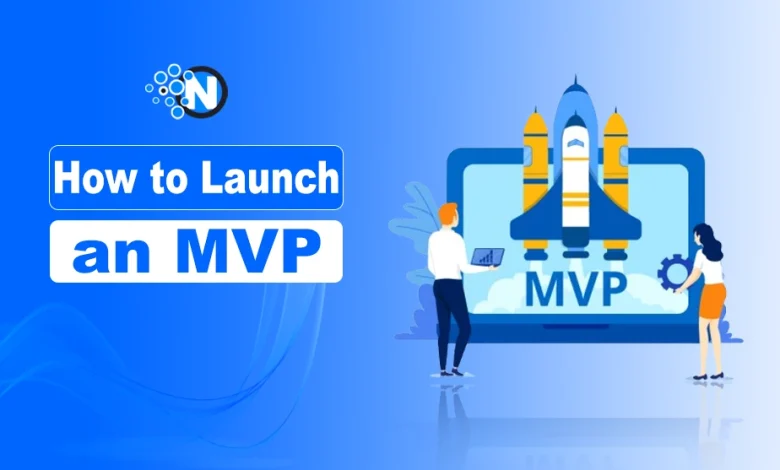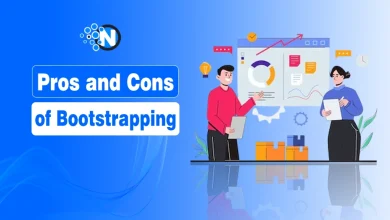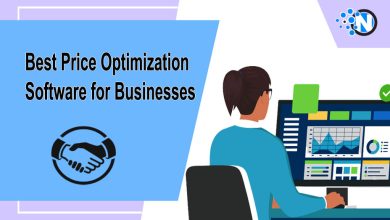How to Launch an MVP for Startup

According to G2, over 30,000 new consumer products are designed and launched every year. This number makes the market competitive for startups with limited budgets and resources. So, how can startups stand out in the market with an MVP?
Startups often face the daunting challenge of building a product that meets market needs with limited resources.
To succeed, one must perform thorough market research to develop an MVP that resonates with target audiences.
By leveraging our expertise, we created this guide to set a reliable path for growth for any digital startup founders.
Let’s explore below!
Understanding the MVP Concept
The Minimum Viable Product (MVP) concept is about releasing the simplest version of a product, highlighting core functionalities while minimizing resource expenditure. It’s about providing maximum value with minimal effort, optimizing product-market fit. This foundational practice is essential for startups seeking efficient launching while gathering robust user feedback.
Among various strategies employed in startups, MVP creation stands front and centre, enabling swift (yet calculated) market penetration and validation. Smart entrepreneurs aim to convert market insights into actionable deliverables, ensuring MVPs inform and inspire future developmental phases.
The MVP’s role in market research cannot be overstated, offering potent insights to refine, pivot, or validate assumptions about audience needs and preferences before investing heavily in full-scale production.
Thus, the path to innovation is full of learning from mistakes. Each iterative feedback cycle acts as a guide, creating a roadmap toward delivering enhanced, more captivating product versions.

Importance of Launching an MVP
Launching an MVP requires a strategic approach that empowers startups to enter markets with precision and agility. By prioritizing core functionalities over exhaustive features, startups can validate their hypotheses and ensure the development trajectory aligns with actual user demands.
This clarity allows new ventures to mitigate risk, adapt swiftly to feedback, and make informed decisions on resource allocation. Consequently, the MVP serves as the nucleus of strategic product development, providing a pragmatic pathway to achieve product-market fit efficiently.
Moreover, launching an MVP fosters a culture of continuous learning and improvement. These advantages underscore the imperative nature of MVPs in the startup ecosystem, offering transformative insights that propel enterprises towards sustainable growth and excellence.
In an environment where innovation drives success, an MVP is more than a starting point; it is a dynamic instrument of change, facilitating the creation of products that truly resonate with their intended audience. That is why it is often designed and developed by a specialized MVP development company to ensure the high quality of the product and business viability.
Steps to Prepare for an MVP Launch
MVP launch requires a well-defined strategy that combines market analysis, customer understanding, and a clear vision of success. Engage diligently in research, validation, and cross-functional collaboration, as these elements fortify the foundation of your venture, ensuring it is primed for dynamic entry into the market. Meticulous planning enables seamless execution from the technical perspective while balancing quality and innovation.
Identifying Target Audience
Identifying your target audience is the core of strategic planning and development, directing your venture and its products. Understanding your audience reduces product failure risks by over 50% according to numerous researches. It paves the way for enhanced engagement of your users and potential customers.
You need to perform thorough demographic analysis, psychographics, and behavioural studies, ensuring a comprehensive understanding that guides product features tailored to user needs, desires, and pain points. By acknowledging and addressing the issues of your audience, you create meaningful connections in user experience and increase user satisfaction.
Defining Core Features
Embarking on the journey to define core features requires an acute understanding of your product’s fundamental purpose and value proposition.
- Focus on Simplicity: Prioritize essential functionalities.
- User-Centric Design: Align features with user needs.
- Scalability: Ensure features can grow with your user base.
- Differentiation: Incorporate distinctive elements that set you apart.
- Cost-Effectiveness: Balance features with MVP budget constraints.
This phase demands a pragmatic approach, emphasizing important elements that resonate with your target audience. You establish a robust foundation for a product, ready to captivate and serve your market effectively.
Conducting Market Research
Proper market research is pivotal to the success and direction of your startup, giving you insights into market dynamics.
- Identify Target Audience: Establish a clear understanding of your ideal customers.
- Analyze Competitors: Assess competitor strengths and weaknesses to identify market gaps.
- Collect Market Data: Gather qualitative and quantitative data to inform decision-making.
- Understand Market Trends: Stay abreast of market changes to better anticipate future opportunities.
By systematically conducting market research, you can refine your strategic focus and align your product vision with real demand while staying agile.
Developing the MVP
Your development journey must be agile, incorporating iterative cycles to refine the product continuously. The general steps are similar to simple development, though focus on fast and iterative approach to product composition.
- Define Core Technical Features: Identify and focus on the essential functionalities without excessive.
- Prioritize User Experience: Design a straightforward and intuitive interface to enhance the initial user interaction.
- Implement Agile Methodologies: Utilize adaptive planning and flexible responses to change, ensuring a resilient development process.
- Incorporate Feedback Loops: Establish mechanisms to gather and integrate user feedback continuously for constant improvement.
- Launch Strategically: Deploy your MVP in a controlled environment to gather valuable insights while minimizing risks.
This strategic approach ensures your MVP is not only functional but poised to capture the market’s attention effectively.

Testing and Validation
Testing involves iteratively evaluating your MVP to ensure its core features function as intended, meeting users’ primary needs seamlessly. Conduct usability tests to assess whether the interface is intuitive and straightforward, resonating with the user experience you aspire to deliver.
Validation extends beyond testing; it demands evidence of market fit. Gather data-driven insights to ascertain if your MVP truly addresses the problem it was designed to solve, aligning with user expectations and requirements.
By embracing strategic testing and validation processes, your startup positions itself to confidently refine and re-iterate the MVP, enhancing its chance of market success. This deliberate cycle ultimately transforms an initial concept into a viable product. Your commitment to testing and validation minimizes risks and starts your path to innovation.
Planning the Launch Strategy
Begin by identifying the driving objectives behind your MVP launch. These objectives will steer your decision-making processes, allowing you to focus operations intelligently towards achieving desired outcomes. Moreover, understanding the scope of your launch will help in allocating resources effectively, ensuring that every aspect is adequately prepared for impact.
Visualize the end goal with clarity. Your objectives must align with – and indeed echo – the very core purpose which your MVP seeks to address – be it market-specific challenges or more profound human experiences.
Finally, the launch strategy offers innumerable opportunities for collaboration between multifaceted stakeholders, harmonizing skills and ideas to create a launch with purpose. Each interaction from design to deployment should be a reflection of sustained commitment to delivering impactful solutions, enhancing your startup’s innovation trajectory.
Leveraging Feedback and Iteration
In the world of MVP development, feedback is the cornerstone of progress and evolution. It can illuminate paths that may have been overlooked, offering insights with the potential to refine your product in remarkable ways. Embrace every piece of feedback as a valuable opportunity to enhance your MVP.
Iterating based on the golden nuggets mined from feedback ensures your MVP does not remain stagnant. A cycle of continuous refinement and updates not only keeps your product relevant but also builds a community of loyal users invested in its success. Approach each iteration with courage, as every step is vital to a startup’s growth.
Marketing the MVP Effectively
Elevating your MVP takes strategic marketing efforts. The launch of a Minimum Viable Product is as thrilling as it is critical. Your aim should be to create a buzz that underscores the innovative solutions your MVP provides, while also inviting an audience eager to interact and engage with your product. Essentially, consider it the art of seamlessly translating the essence of your innovation into the language of market excitement.
Craft captivating narratives that highlight your solution’s uniqueness. Your marketing strategy should focus on – not merely the features your MVP offers – but the tangible benefits users will derive from it. This means a clear, compelling articulation of pain points addressed through real-world scenarios.
Harness digital platforms to amplify your message, leveraging contemporary techniques of targeted advertising, ensuring you are reaching potential game-changers who will drive your product forward. This digital-first approach nurtures not just an audience, but partnerships destined to propel ongoing innovation.
Measuring Success Metrics
To ensure meaningful growth, success metrics serve as vital markers for evaluating the effectiveness and impact of your MVP. In this context, it is paramount to identify a set of carefully chosen success indicators that align with your startup’s objectives.
These metrics must offer insights into how well your MVP resonates with its target users, thereby acting as a direct reflection of your product’s viability in the market dynamics. Intricate analysis of these metrics brings clarity to customer engagement and satisfaction levels.
Quantitative metrics, like user acquisition and retention rates, should be meticulously monitored. They reveal how your MVP fares in attracting and retaining a loyal user base, which is indispensable in shaping marketing and development strategies for the broader product roadmap.
Furthermore, qualitative metrics such as user feedback and satisfaction scores provide a nuanced understanding of the user experience. By integrating these insights into your development process, you ensure that the evolution of your MVP remains user-centric, adapting swiftly to the ever-changing market demands and positioning your startup for sustained success and growth.
Common Pitfalls to Avoid
Venturing into the territory of launching an MVP requires careful consideration to avoid common missteps that can derail your progress and waste valuable resources.
Neglecting proper market research often leads startups astray. Ensure that your product meets an actual market need by diligently validating your assumptions. Many first-time entrepreneurs fall into the trap of developing for imagined customers, compromising genuine growth opportunities.
Another frequent misjudgment is overloading the MVP with features. This dilutes your core value proposition and can lead to prolonged development timelines that exhaust resources before market entry. Instead, emphasize a focused, impactful initial offering that addresses significant customer pain points, allowing for feedback-driven, iterative enhancement post-launch. Remember, simplicity paired with strategic ingenuity often triumphs over complexity.
How to Launch an MVP for Startup Successfully
To launch an MVP successfully, one must first embrace the power of lean startup principles. This involves crafting a version of your product that challenges conventions, delivering just enough to spark enthusiasm and gather crucial feedback. Essentially, think of an MVP as an ongoing conversation with the market, not merely a stepping stone to a full-scale solution.
Refine your vision and develop rapid prototypes. Ensure that these prototypes are laser-focused on solving key problems for your target audience—validating hypotheses before scaling up. These test-driven insights will inform product evolution, ensuring you stay aligned with customer needs while optimizing resource allocation.
Harness the latest technology trends, reflecting in your MVP a cutting-edge yet accessible solution, poised to meet the evolving demands of 2025 and beyond. Remember, a successful MVP path leverages data analytics and dynamic user feedback as its compasses, guiding informed pivoting and expansion decisions.
Final Thoughts
Navigating the journey of launching an MVP requires a fine balance of innovation, foresight, and strategic adaptation. Each step forward is a testament to your dedication to addressing market demands with precision and intent.
Your commitment to lean principles empowers you to iterate rapidly and efficiently. Build upon each layer of insight gained through user feedback and data analysis to refine your offering continually. This iterative process ensures that the product remains relevant and forward-thinking.




